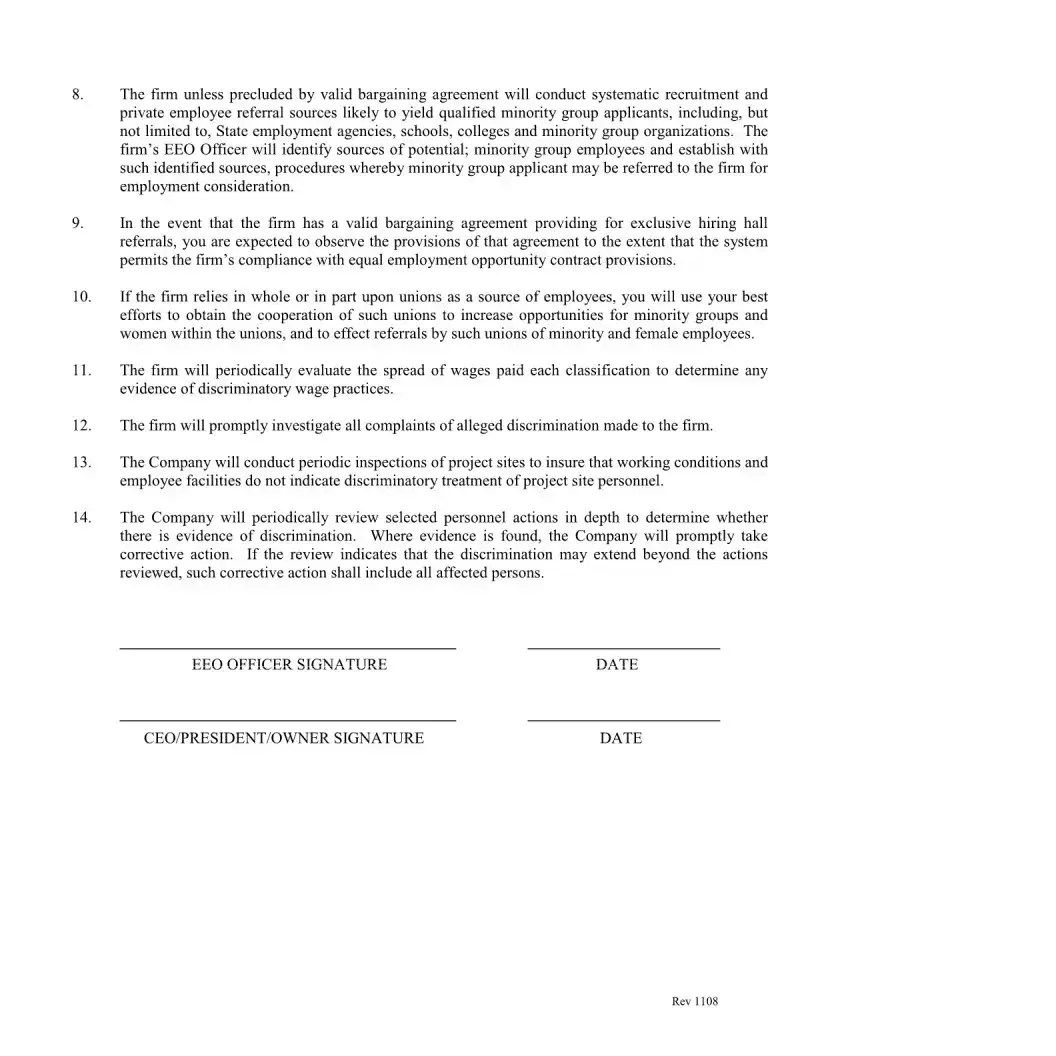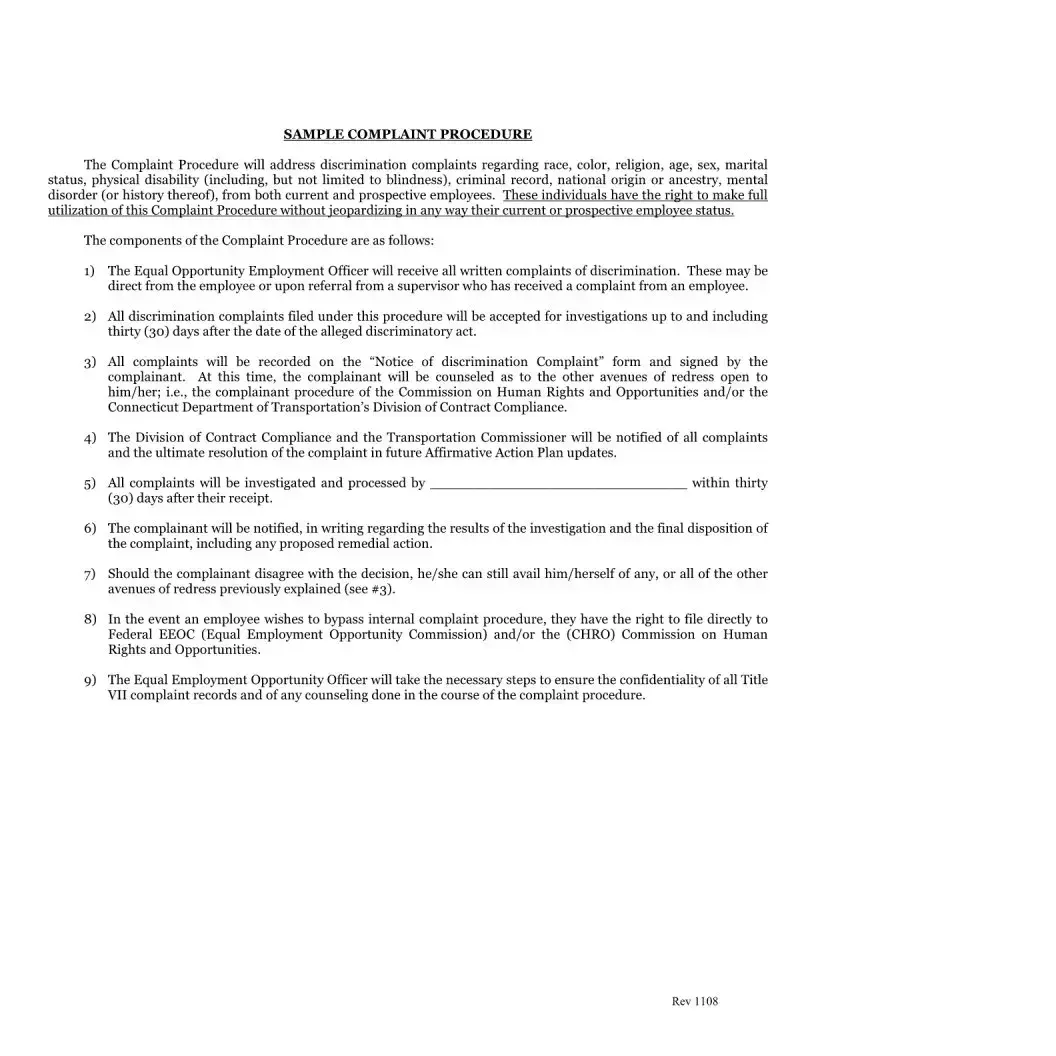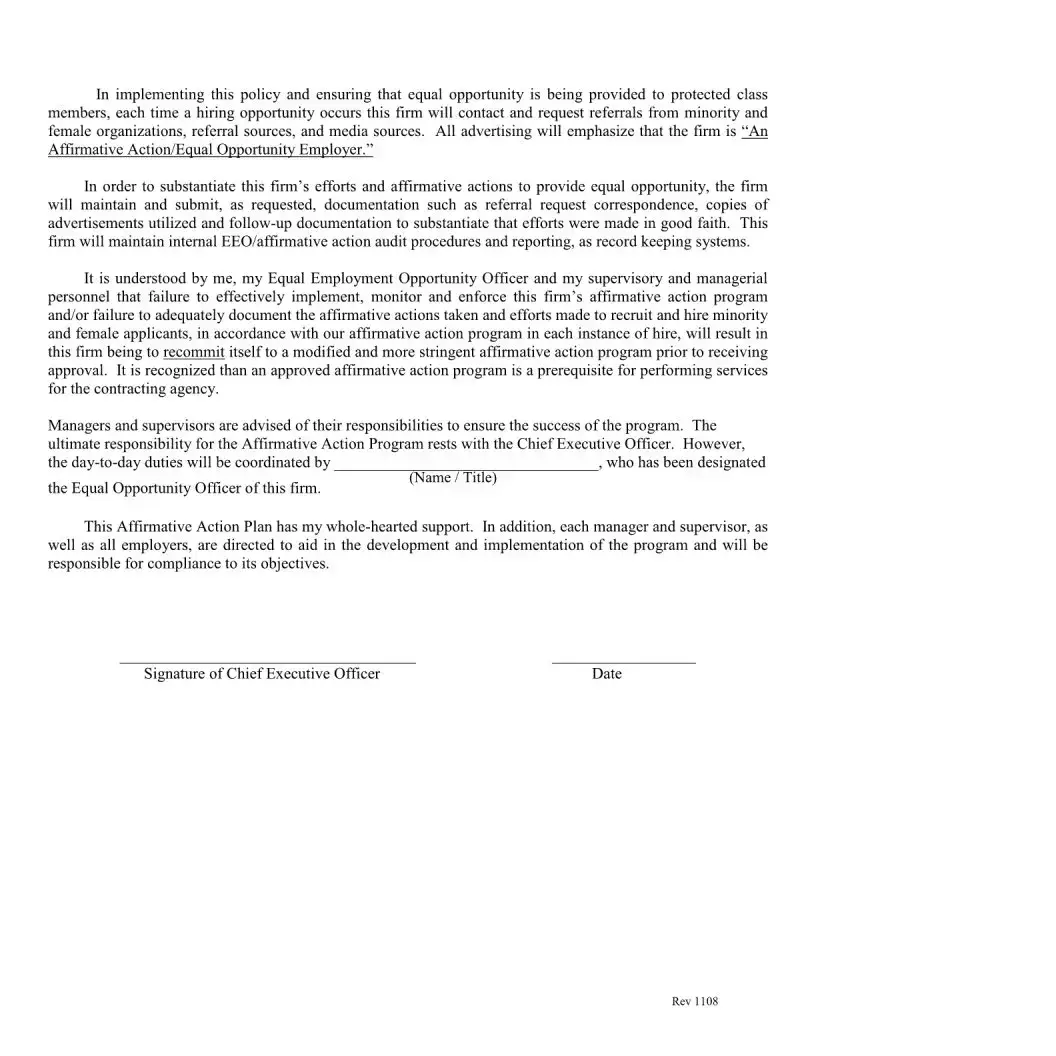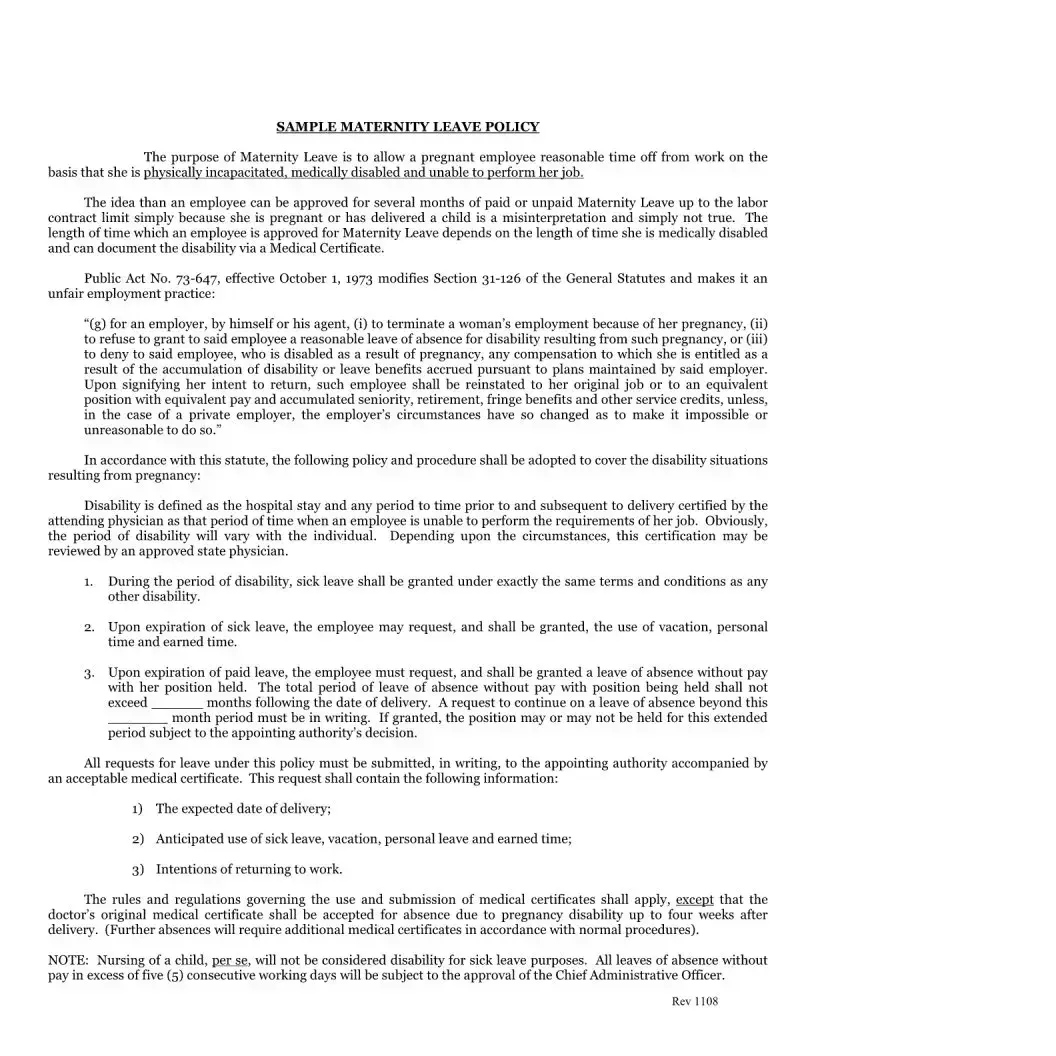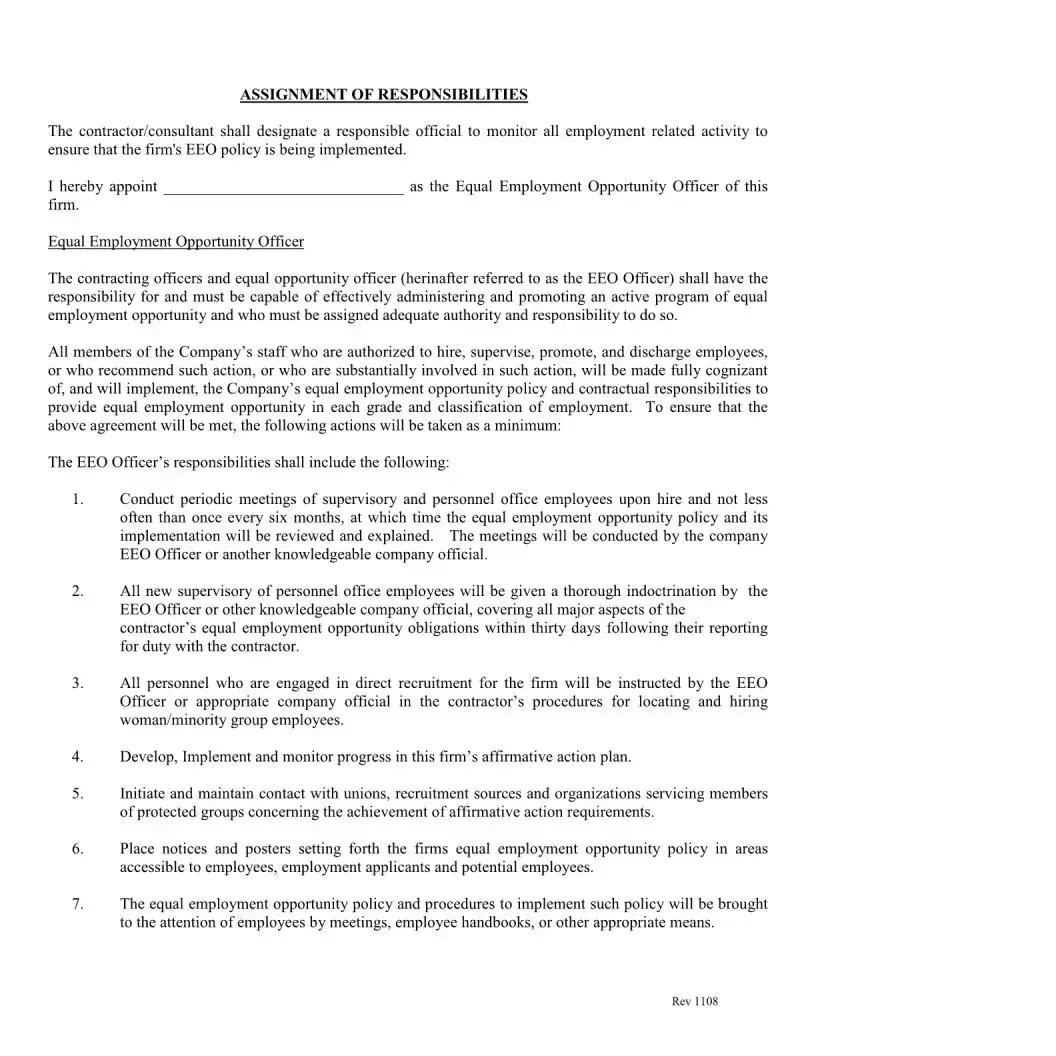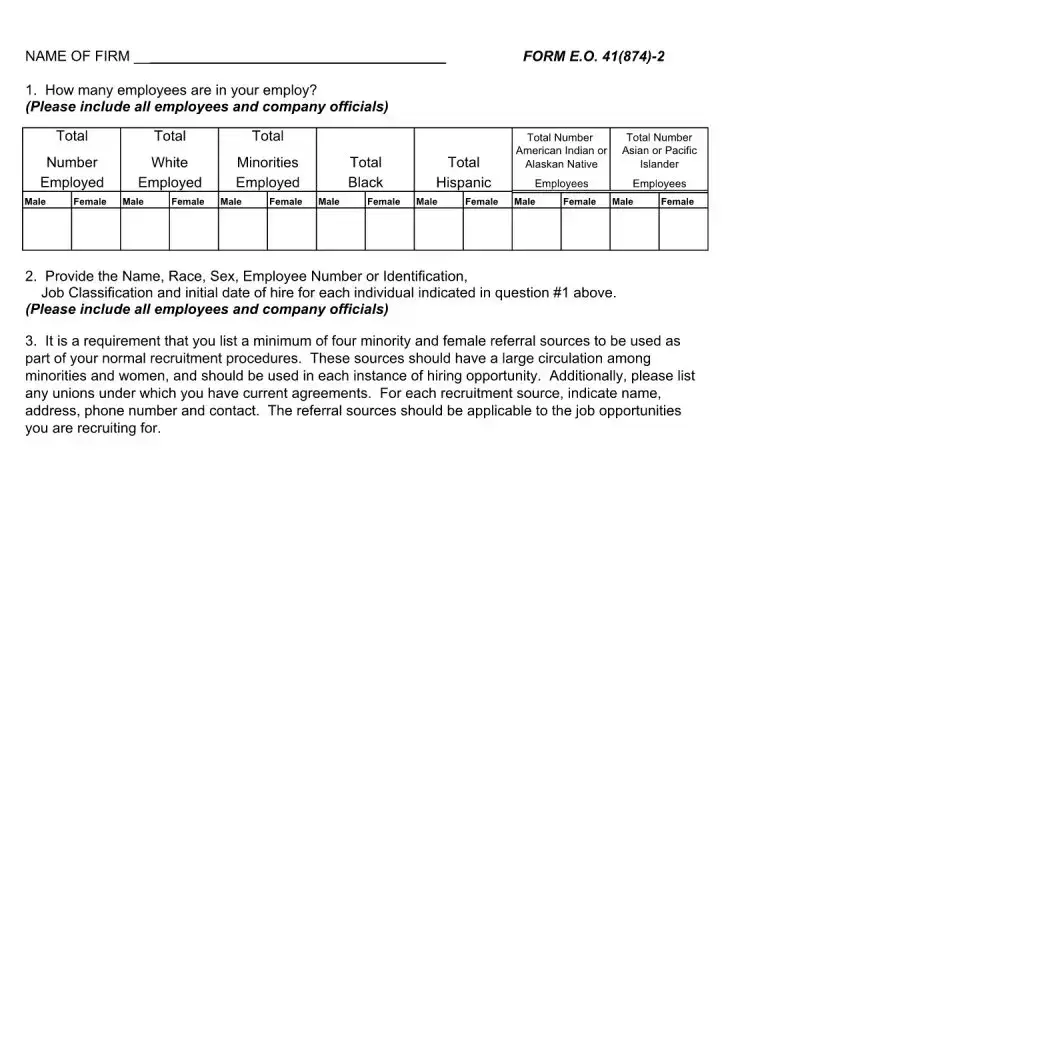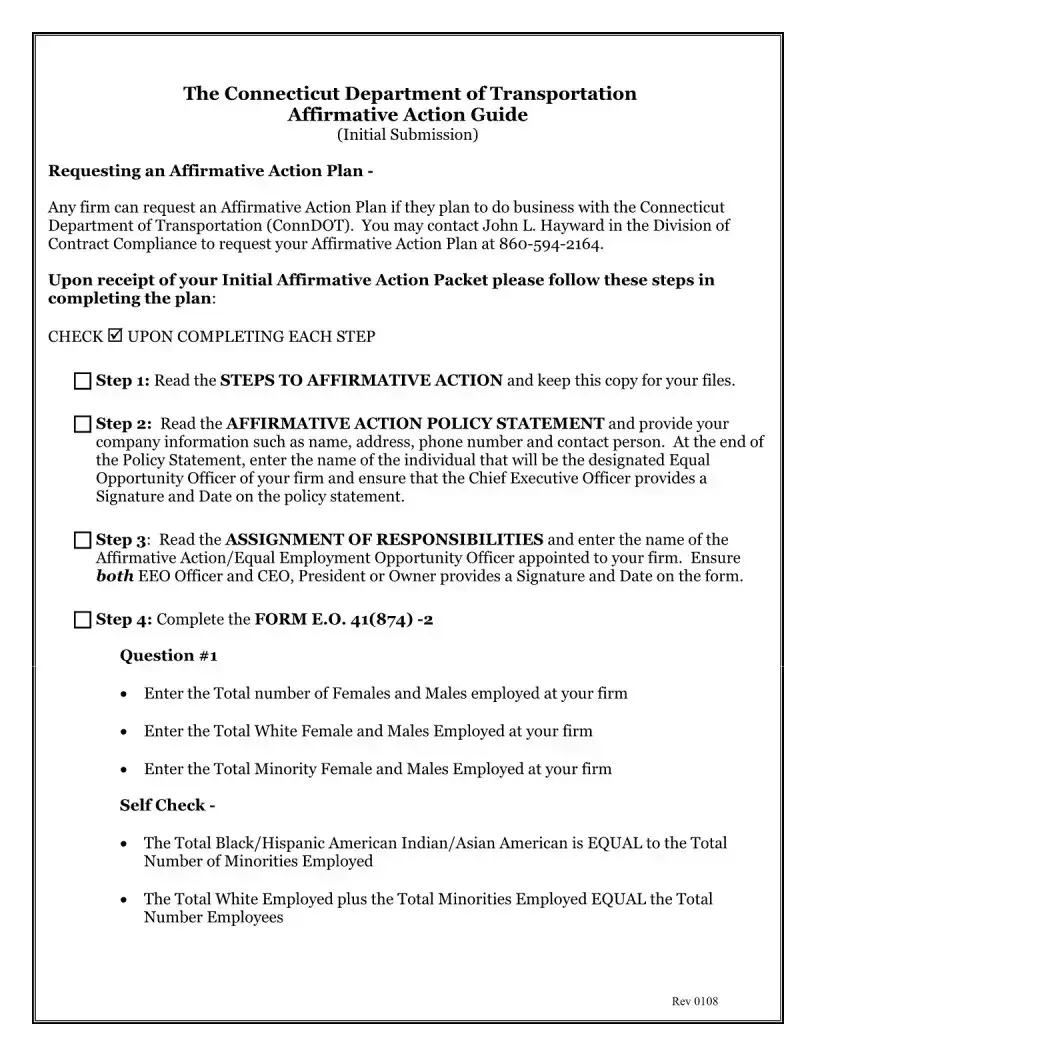1. What is the purpose of the Affirmative Action Plan form?
The Affirmative Action Plan form serves as a structured framework that outlines a company's commitment to fostering equal employment opportunities. Its primary purpose is to ensure that individuals are not discriminated against based on race, color, religion, sex, national origin, or disability during employment practices. The plan includes various components such as recruitment, hiring, training, and promotion, all aimed at achieving a diverse workforce that reflects the community it serves.
2. Who is responsible for implementing the Affirmative Action Plan?
The Chief Executive Officer holds ultimate responsibility for the Affirmative Action Plan’s effective implementation. Day-to-day operations, however, are managed by the Equal Opportunity Officer, who ensures compliance with the firm's policies and legal requirements. Supervisory and managerial personnel also play critical roles in promoting and supporting these initiatives within their teams.
3. How does the firm ensure compliance with federal and state laws?
To maintain compliance with federal and state laws, the company commits to following various established regulations, such as the Civil Rights Act and the Americans with Disabilities Act. Additionally, the firm must consistently monitor its practices to ensure adherence to these laws. This includes conducting audits, maintaining detailed records, and submitting documentation that reflects good faith efforts to recruit a diverse workforce.
4. What actions does the firm take to recruit diverse candidates?
The firm adopts a proactive approach to recruitment by establishing connections with minority and female organizations, as well as utilizing media sources that target these groups. Job postings clearly state that the firm is an “Affirmative Action/Equal Opportunity Employer,” and all recruitment materials are designed to emphasize inclusivity. This multi-faceted strategy is aimed at attracting a wider pool of qualified candidates from various backgrounds.
5. What is the process for an employee to raise a discrimination complaint?
Employees are encouraged to report any complaints of alleged discrimination directly to their Equal Opportunity Officer or through designated channels as outlined in the firm's policies. The company is committed to investigating these complaints promptly and thoroughly. Investigating such claims is critical for maintaining a fair and equitable working environment, and corrective actions will be implemented if discrimination is substantiated.
6. Can you explain the Maternity Leave policy?
The Maternity Leave policy is designed to provide reasonable time off for employees who are medically incapacitated due to pregnancy. An employee’s leave duration is determined based on medical certification from their physician. After sick leave is utilized, employees may request additional leave using vacation, personal time, or unpaid leave. Reinstatement to the original or an equivalent position is guaranteed, unless circumstances render it unreasonable to do so.
7. How does the firm monitor its affirmative action efforts?
The firm conducts regular evaluations and audits of its hiring practices to track progress towards achieving affirmative action goals. This includes reviewing personnel actions, assessing wage distributions to identify potential discriminatory practices, and systematically inspecting workplaces to ensure fair treatment of all employees. Periodic meetings with staff are also held to reinforce the commitment to equal employment opportunities.
8. What documentation must be maintained to support affirmative action efforts?
Documentation is crucial in substantiating the company’s affirmative action efforts. Records must include referral requests, copies of job advertisements, and any correspondence that demonstrates outreach to diverse communities. This documentation serves to validate the firm's commitment and actions taken towards ensuring equal opportunities and allows for regular assessments of the program's effectiveness.
9. What role does training play in the Affirmative Action Plan?
Training is integral to the successful execution of the Affirmative Action Plan. The Equal Opportunity Officer provides ongoing education for supervisory and personnel staff to ensure they are well-informed about policies and practices that promote equal employment opportunities. Such training encompasses understanding legal obligations, recognizing bias, and implementing best practices for inclusive recruitment and retention of diverse employees.


